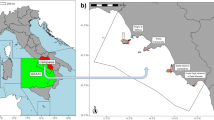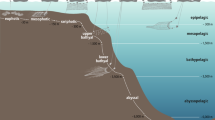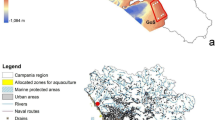Abstract
THE Panama Canal (Fig. 1) represents a potential pathway for the interoceanic dispersal of marine fishes. The fresh waters of Lakes Gatun and Miraflores have, however, effectively maintained the isolation of all but a few of the marine shore fishes which are found on both coasts of the isthmus, those species which are able to cross this barrier are not known to breed on the opposite coast1.
This is a preview of subscription content, access via your institution
Access options
Subscribe to this journal
Receive 51 print issues and online access
$199.00 per year
only $3.90 per issue
Buy this article
- Purchase on SpringerLink
- Instant access to full article PDF
Prices may be subject to local taxes which are calculated during checkout
Similar content being viewed by others
References
Hildebrand, S. F., Zoologica, 24, 15 (1938).
Breder, C. M., Amer. Mus. Nov., 551, 1 (1932).
Hollister, G., Bull. NY Zool. Soc., 37, 183 (1934).
Author information
Authors and Affiliations
Rights and permissions
About this article
Cite this article
RUBINOFF, R., RUBINOFF, I. Interoceanic Colonization of a Marine Goby through the Panama Canal. Nature 217, 476–478 (1968). https://doi.org/10.1038/217476a0
Received:
Revised:
Published:
Issue date:
DOI: https://doi.org/10.1038/217476a0
This article is cited by
-
A Two-Ocean Bouillabaisse: Science, Politics, and the Central American Sea-Level Canal Controversy
Journal of the History of Biology (2017)
-
Localized invasion of the North American Harris mud crab, Rhithropanopeus harrisii, in the Panama Canal: implications for eradication and spread
Biological Invasions (2009)
-
Interoceanic occurrence of species of Aristocleidus Mueller, 1936 (Monogenoidea: Dactylogyridae) parasitizing the gills of gerreid fishes in the Neotropics
Parasitology Research (2009)
-
Morphological divergence of Eastern Pacific and Caribbean isopods: effects of a land barrier and the Panama Canal
Marine Biology (1989)
-
Comparative species composition and relative abundance of decapod crustaceans in marine habitats of Panam�
Marine Biology (1976)



